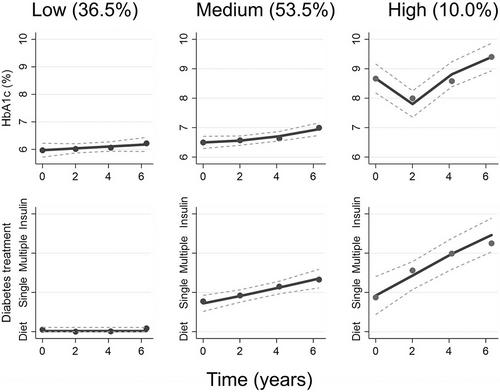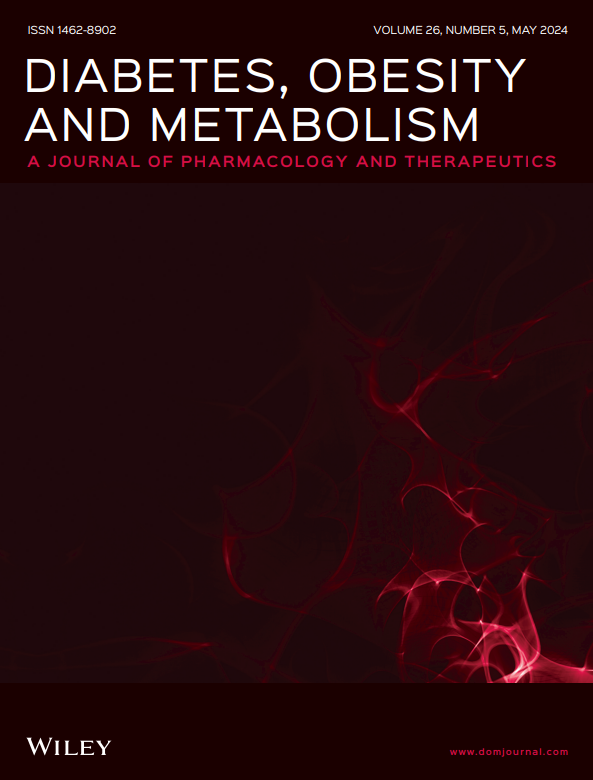To examine the relationships between glycaemia and treatment complexity over 6 years in well-characterized community-based people with type 2 diabetes.
Fremantle Diabetes Study Phase II participants who had type 2 diabetes with glycated haemoglobin (HbA1c) and blood glucose-lowering therapy (BGLT) data over 6 years were included. Group-based multi-trajectory modelling identified combined HbA1c/BGLT trajectory subgroups for diabetes durations of ≤1.0 year (Group 1; n = 160), >1.0 to 10.0 years (Group 2; n = 382;) and >10.0 years (Group 3; n = 357). Multinomial regression was used to identify baseline associates of subgroup membership.
The optimum numbers of trajectory subgroups were three in Group 1 (low, medium, high) and four in Groups 2 and 3 (low, low/high medium, high). Each low trajectory subgroup maintained a mean HbA1c concentration of <53 mmol/mol (<7.0%) on lifestyle measures, or monotherapy (Group 3). All five medium subgroups had stable HbA1c trajectories at <58 mmol/mol (<7.5%) but required increasing oral BGLT, or insulin (Group 3, high medium). The Group 1 high subgroup showed a falling then increasing HbA1c with steady progression to insulin. The high subgroups in Groups 2 and 3 showed stable HbA1c profiles at means of approximately 64 mmol/mol (8.0%) and 86 mmol/L (10.0%), respectively, on insulin. Non-Anglo Celt ethnicity, central obesity and hypertriglyceridaemia were strongly associated with Group 1 high subgroup membership. Younger age at diagnosis and central obesity were independent associates of the most adverse HbA1c trajectories in Groups 2 and 3.
These data demonstrate diabetes duration-dependent heterogeneity in glycaemic and treatment profiles and related clinical and laboratory variables, which have implications for management.



